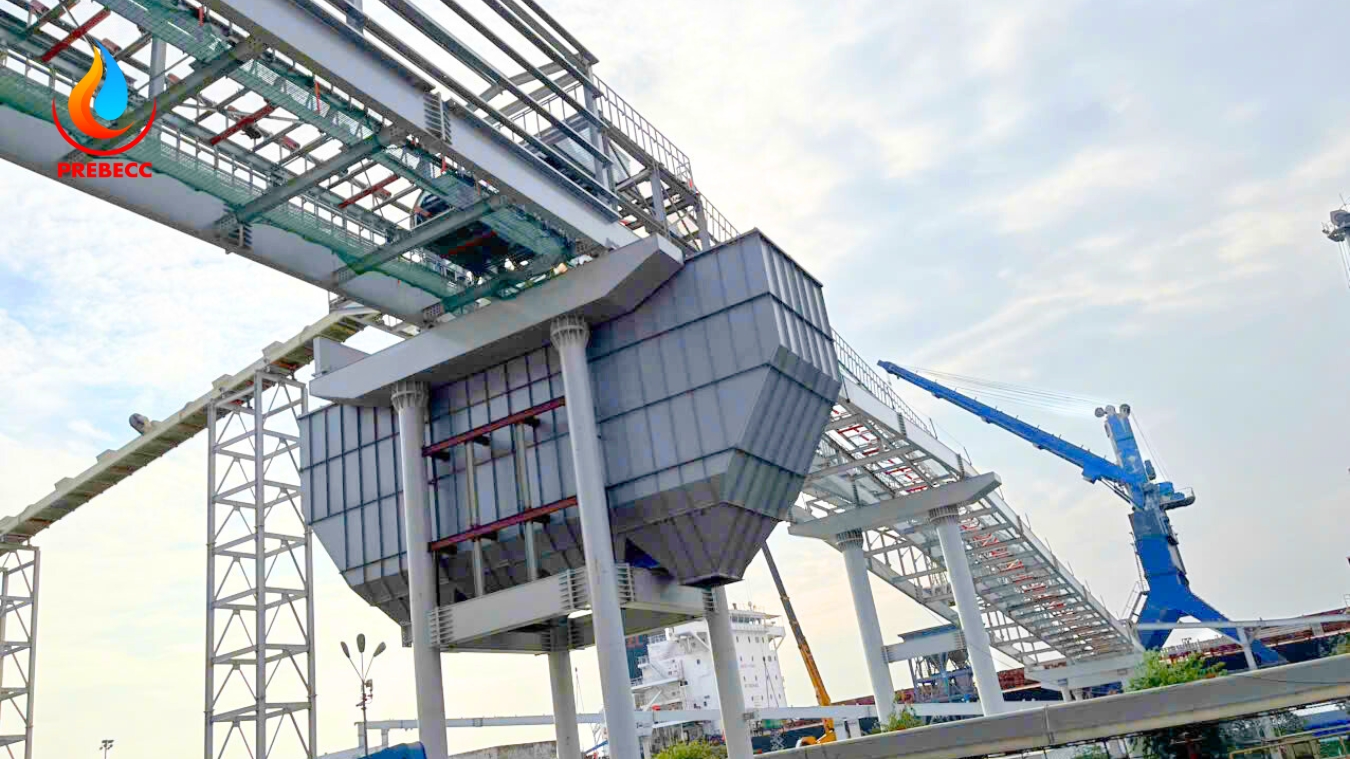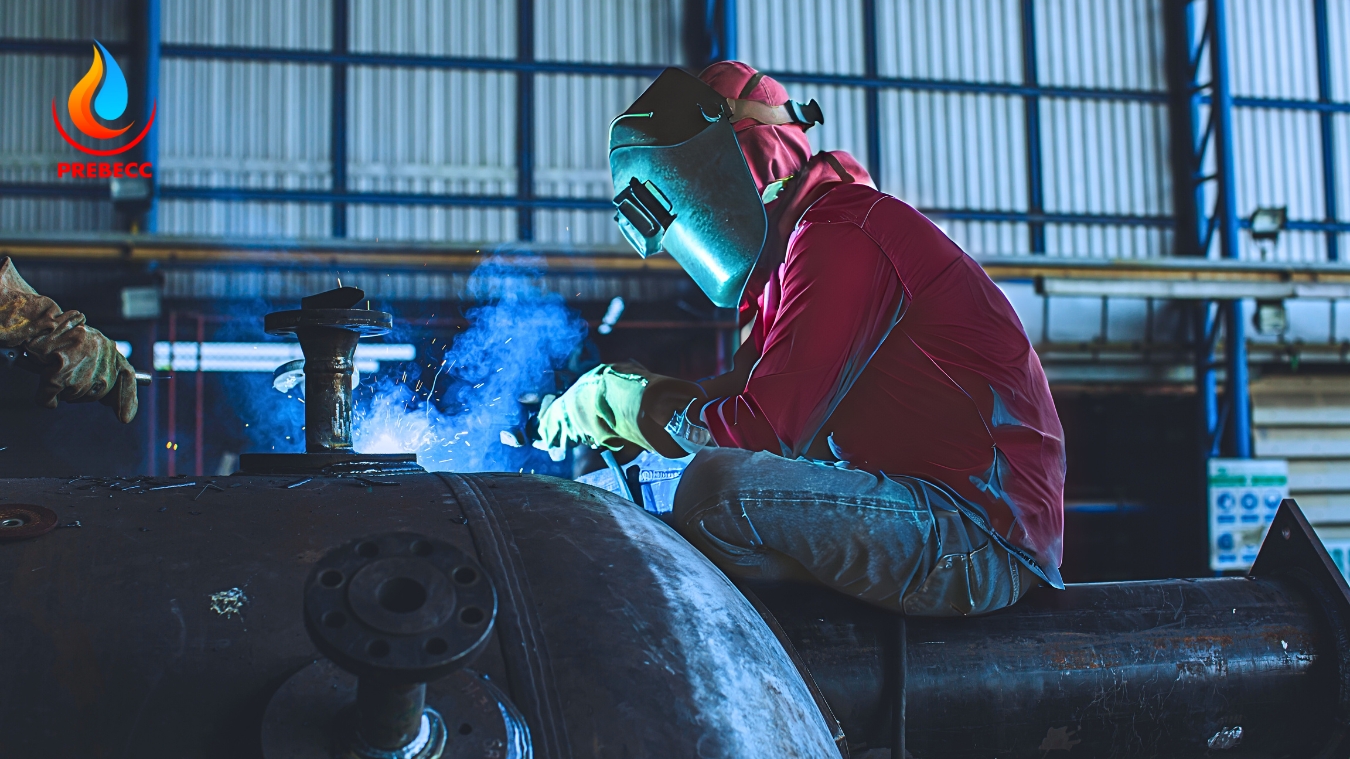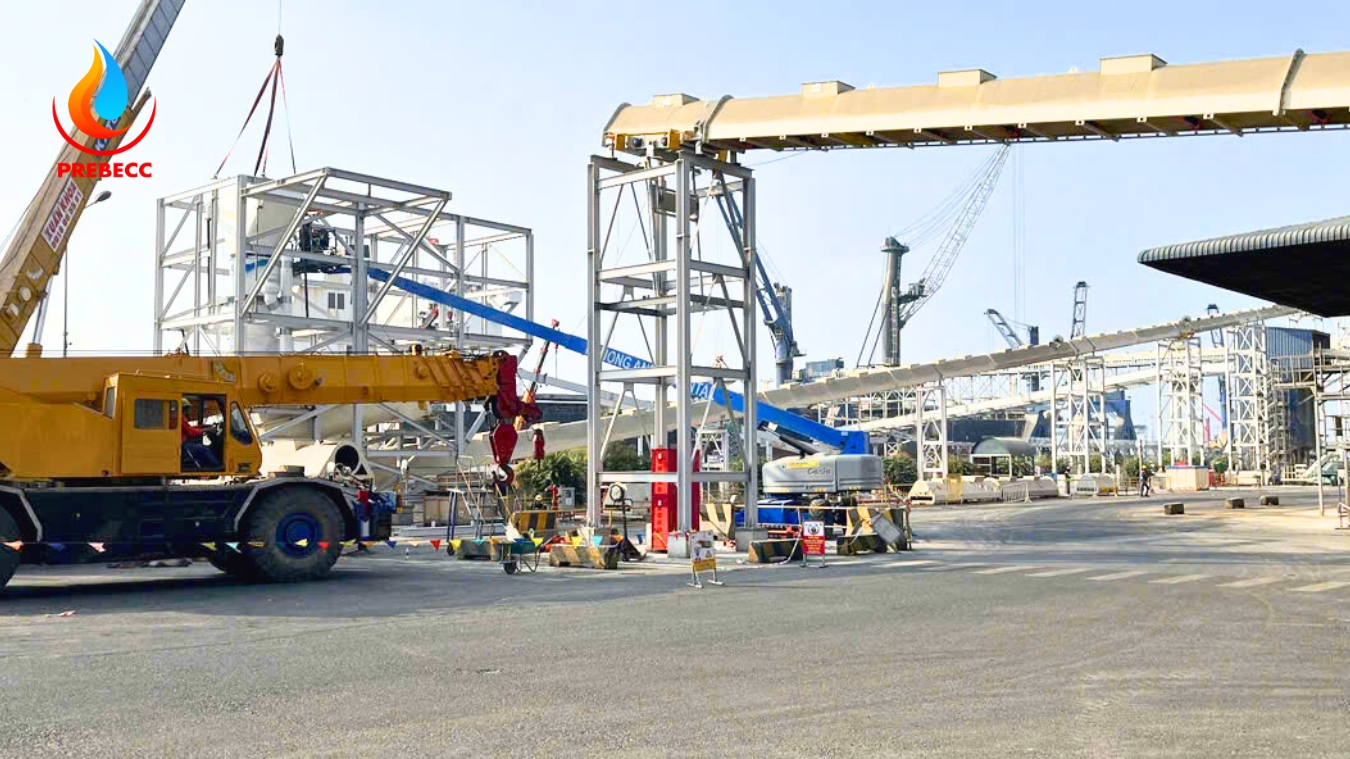In modern industries, the installation of industrial pipeline systems is crucial for transporting liquids, gases, and raw materials. These systems act as the “lifelines” that ensure the continuous and efficient operation of factories and industrial zones. High-quality design, superior materials, and precise installation processes are essential to achieving optimal performance and long-term safety.
1. Common materials for industrial pipeline systems
Material selection depends on industry-specific requirements to meet demanding standards:
- Steel Pipelines: Ideal for high-pressure and high-temperature environments.
- Plastic Pipelines: Suitable for light industries or corrosive environments.
- Cast Iron Pipelines: Preferred for water supply and drainage systems due to durability.
The choice of materials impacts efficiency, system lifespan, and maintenance costs.
2. Importance of professional installation
Installing industrial pipeline systems is a complex task requiring skilled teams and strict adherence to technical standards. Proper installation ensures:
- Optimized material flow and minimized energy loss.
- Safe operation, reducing risks of leaks or failures.
Conversely, poor installation can lead to production downtime, financial losses, and severe safety hazards.
3. Prebecc’s expertise in Pipeline Installation
With extensive experience, PREBECC COMPANY LIMITED delivers industrial pipeline solutions that meet international standards. We offer:
- Tailored solutions based on specific customer requirements.
- Skilled engineers ensuring precise and efficient execution.
- High-quality materials that meet safety and sustainability standards.
At Prebecc, every pipeline installation project reflects our commitment to delivering exceptional value. Let us partner with you to build reliable and efficient systems for sustainable operations!

4. Standard industrial pipeline installation process
Installing industrial pipeline systems requires a meticulous process to ensure accuracy, safety, and operational efficiency. Below are the standard steps implemented successfully by Prebecc Co., Ltd.’s engineers in numerous projects.
4.1. Thorough Preparation
4.1.1. Site Survey and Detailed Planning
The initial survey collects data on terrain, environment, and technical requirements. The engineering team performs the following tasks:
- Precise measurements using tools like total stations or 3D scanning devices.
- Analysis of factors such as pressure, temperature, and environmental corrosion potential.
- Creation of detailed design drawings adhering to technical standards, such as ASME B31.3 for industrial pipelines.
4.1.2. Material and equipment preparation
Depending on the system’s specific needs, materials like carbon steel, stainless steel, PVC, or HDPE are selected. Essential components, including valves, elbows, tees, couplings, and welding machines, are fully prepared. All materials must be certified with a Certificate of Conformance (COC) from suppliers.
4.2. Installation execution
4.2.1. Cutting, bending, and sssembling pipes
Based on the design drawings, pipes are cut and bent to the required dimensions and angles. Advanced cutting technologies, such as plasma or laser cutting, are employed to ensure precision without distorting the material.
4.2.2. Welding and joining pipe segments
Welding requires meticulous attention to ensure strong and leak-proof joints. Common welding methods include:
- TIG Welding (Tungsten Inert Gas): Ideal for stainless steel materials.
- MIG Welding (Metal Inert Gas): Suitable for carbon steel.
Each weld undergoes non-destructive testing (NDT), such as ultrasonic inspection or X-ray imaging, to verify strength and sealing integrity.

4.2.3. Installation of auxiliary equipment
Auxiliary components such as control valves, fittings, and tees are installed at designated positions. This step ensures not only aesthetic alignment but also the optimization of fluid flow throughout the system.
4.2.4. System testing
Once the basic installation is completed, the system undergoes rigorous testing, including:
- Pressure Testing: Water or compressed air is used to verify the system’s strength and pressure resistance. The test pressure is typically 1.5 times the operating pressure.
- Leak Detection: Soap bubble solution or gas detection devices are employed to identify any leakage points.
4.3. Completion and Handover
4.3.1. Cleaning and maintenance
The system is thoroughly cleaned to remove dust, metal shavings, or any residual contaminants. This process commonly involves compressed air, clean water, or specialized chemical solutions.
4.3.2. Project handover
Upon completion, the system undergoes comprehensive trial runs before being officially handed over. All relevant documents, including as-built drawings, test reports, and operation manuals, are provided to the client to ensure smooth operation and maintenance.

5. Types of industrial pipelines and their applications
Industrial pipeline systems are indispensable in modern production industries, ensuring the efficient transportation of liquids, gases, and steam. Depending on the characteristics and requirements of each industry, pipelines are designed and installed with distinct features to meet specific needs.
5.1. Liquid transport pipelines
5.1.1. Applications
Liquid pipelines are primarily used for transporting water, oil, and chemicals in industries such as oil and gas, chemical processing, and water supply and drainage systems.
5.1.2. Characteristics
- Materials: Stainless steel, PVC, or HDPE are common choices due to their corrosion resistance and ability to withstand high pressures.
- Standards: Systems must comply with standards like API 570 (Piping Inspection Code for Oil and Gas Pipelines) or ASTM D1785 (PVC Pipe Standards).
5.1.3. Considerations
- Ensure corrosion resistance for pipelines carrying chemicals.
- Drainage systems must be installed with proper slopes to avoid water stagnation, which can reduce efficiency.
5.2. Gas transport pipelines
5.2.1. Applications
These systems are used for transporting compressed air, natural gas (LNG), or hydrogen in industries such as oil and gas, energy production, and manufacturing.
5.2.2. Characteristics
- Materials: Carbon steel or alloy steel is commonly used due to their capacity to withstand high pressure and temperature.
- Technical Standards: Systems must meet the requirements of ASME B31.8 (Gas Transmission and Distribution Piping Systems).
5.2.3. Considerations
- Conduct regular leak inspections using non-destructive testing (NDT) methods.
- Safety valves and pressure gauges are mandatory to ensure system safety during gas transportation.

5.3. Steam pipelines
5.3.1. Applications
Steam pipelines are widely used in thermal power plants, boiler systems, and food processing industries where steam is essential for heating processes.
5.3.2. Characteristics
- Materials: Heat-resistant alloy steels like P91 and P22 are ideal for withstanding high temperatures.
- Requirements: Pipelines must be designed to accommodate thermal expansion, preventing cracks and failures during prolonged operation.
5.3.3. Considerations
- Install steam traps to prevent condensation, which can reduce efficiency.
- Regular cleaning is necessary to remove deposits and maintain consistent steam flow.
5.4. Industrial applications
Oil and Gas Industry
Industrial pipelines are used to transport crude oil and natural gas from offshore rigs to processing plants. These pipelines must be highly corrosion-resistant and capable of withstanding extreme pressure in harsh environments.
Chemical Industry
Specialized pipelines are employed to handle acids, alkalis, or hazardous chemicals. These systems require stringent safety measures and corrosion-resistant materials to prevent leaks and ensure durability.
Food Industry
Pipelines transporting clean water or steam must meet hygiene standards such as FDA or EHEDG to ensure food safety.
Power Industry
Steam pipelines in thermal power plants are critical for generating energy from boilers. They must endure extremely high pressure and temperature conditions while maintaining operational safety.
Each type of industrial pipeline plays a vital role in its respective industry. Selecting the appropriate materials, adhering to design standards, and following precise installation practices are crucial to ensuring the long-term efficiency and safety of these systems.
